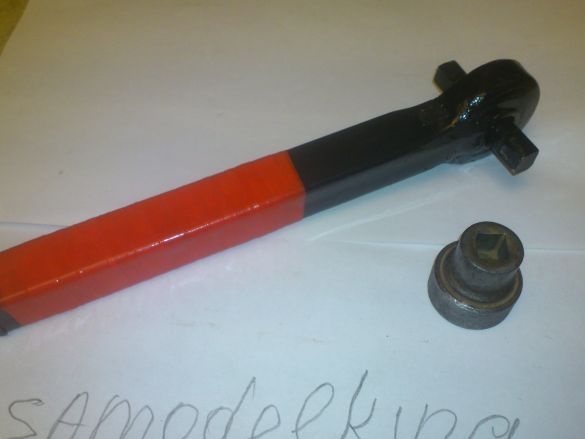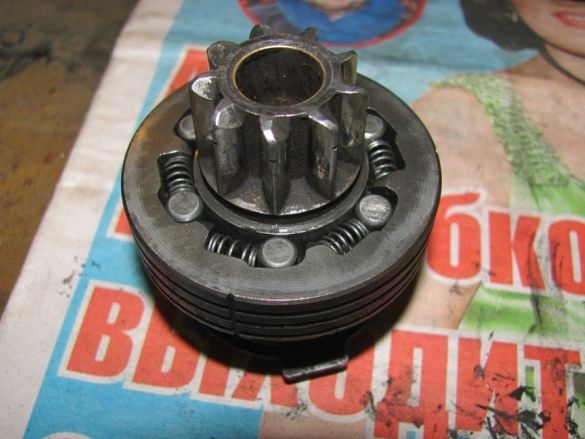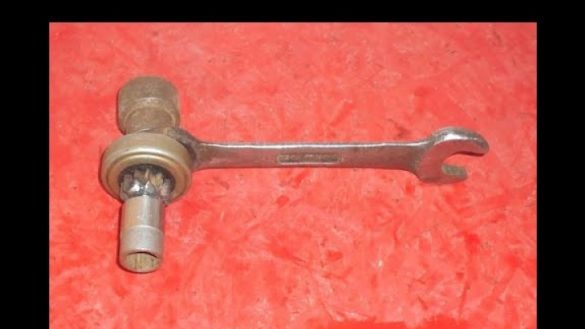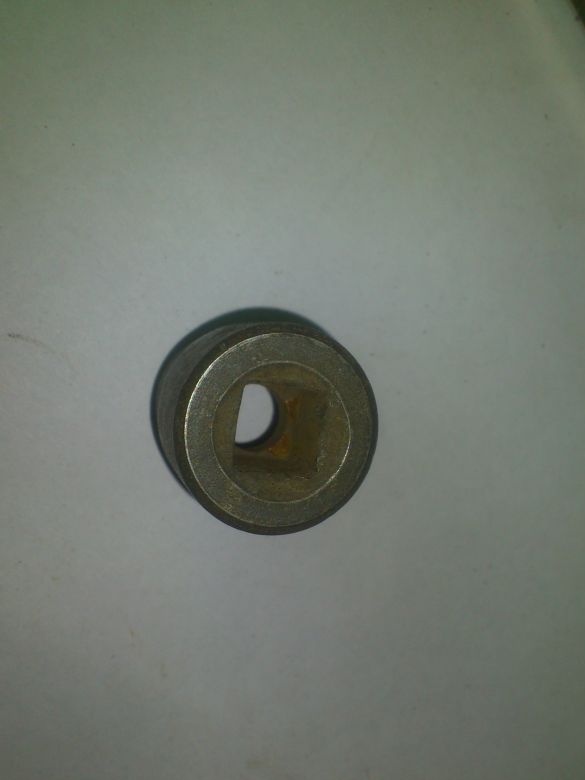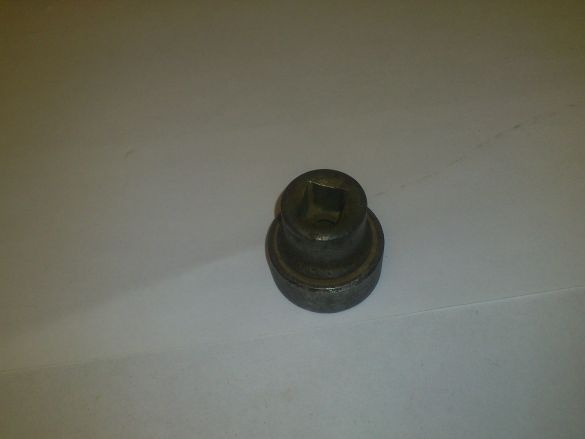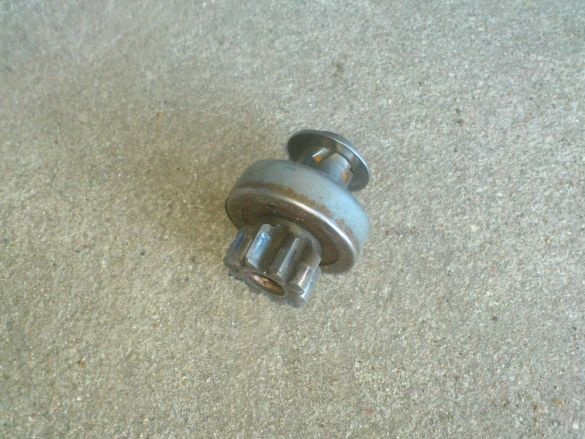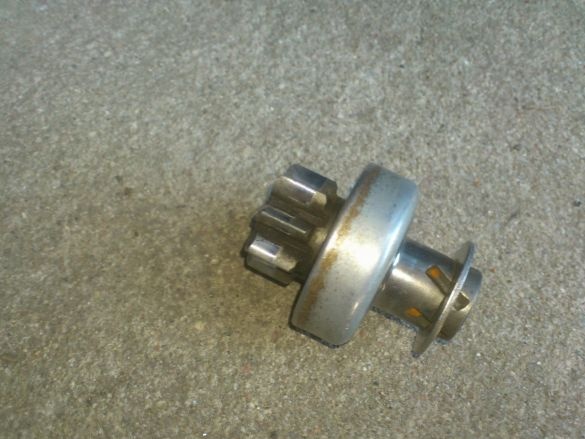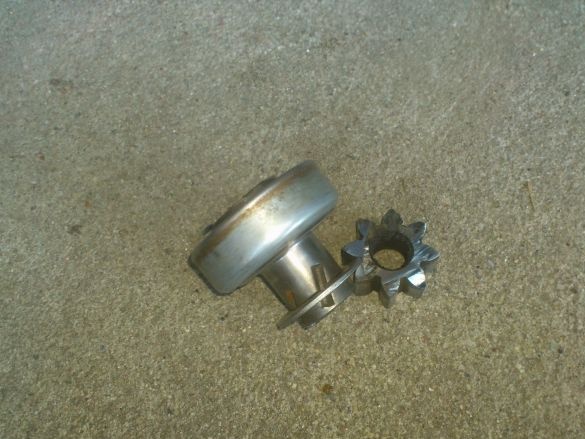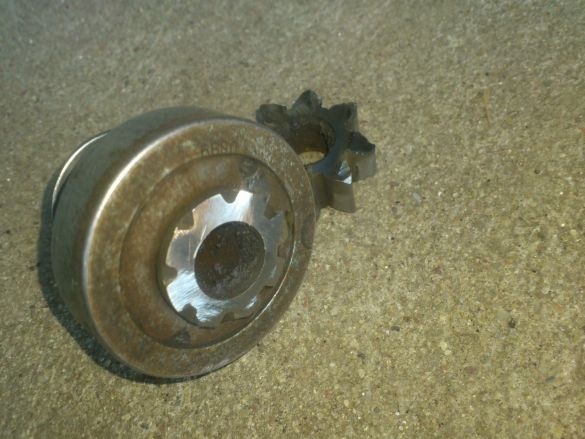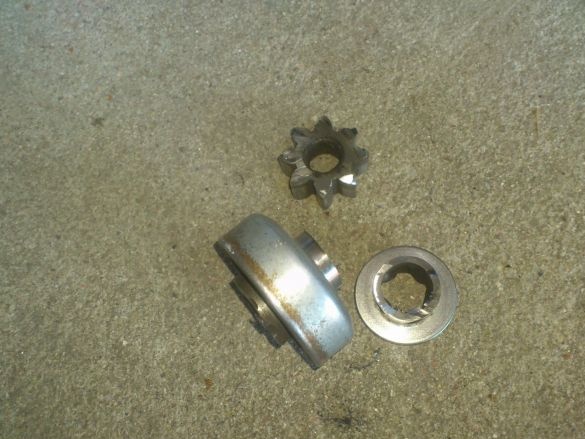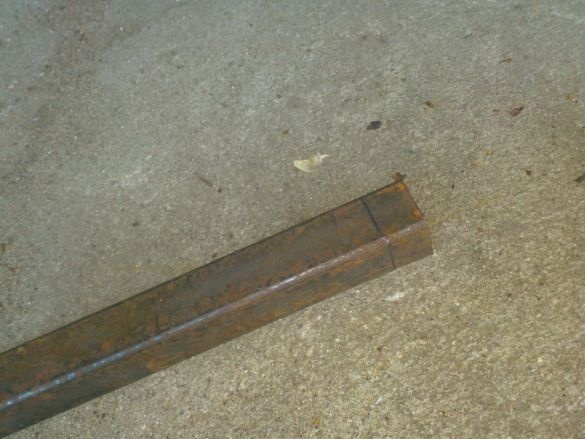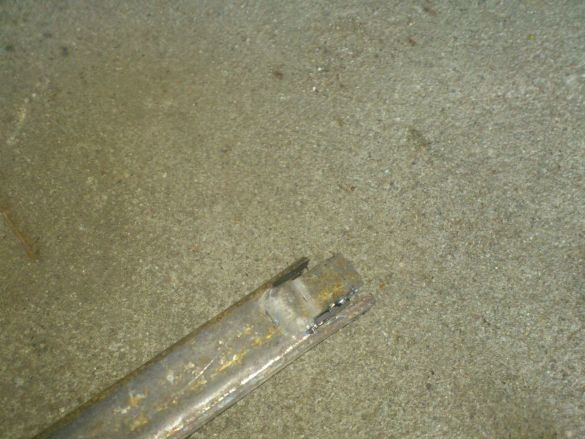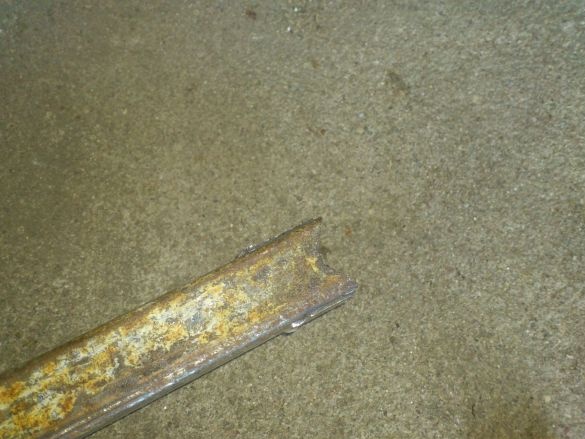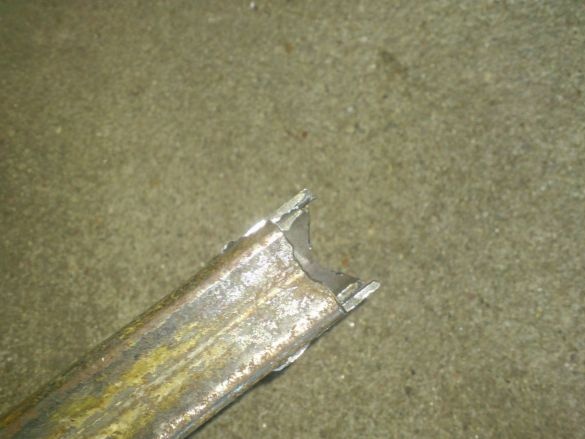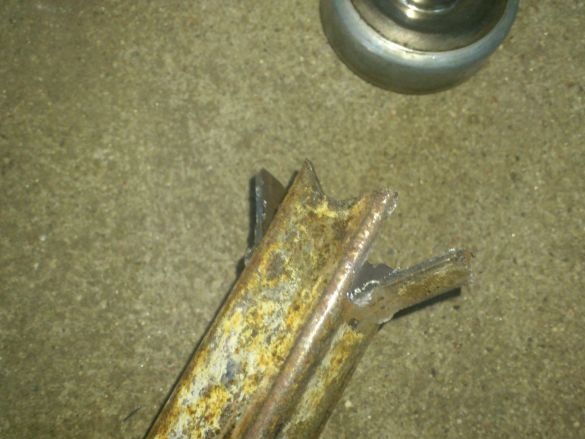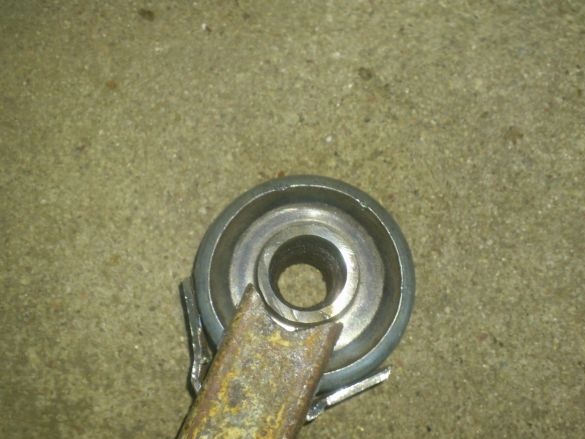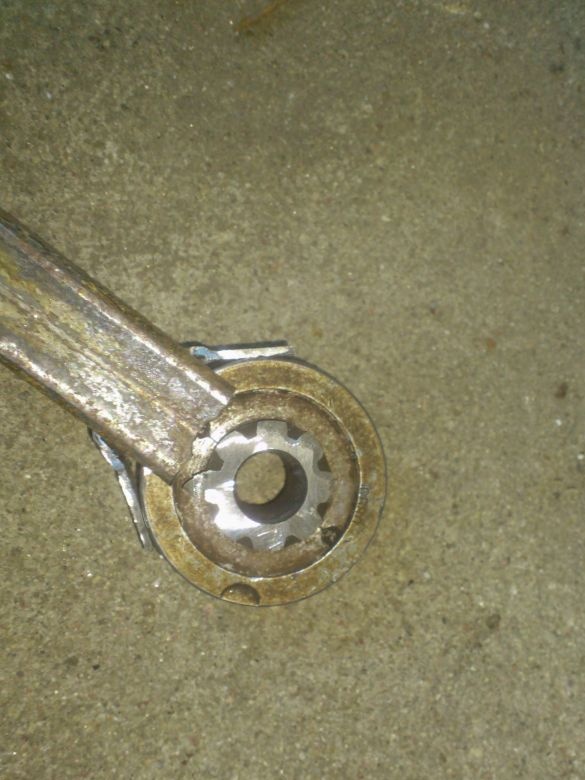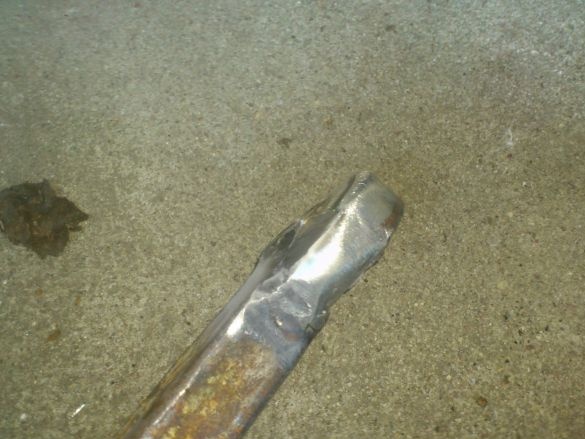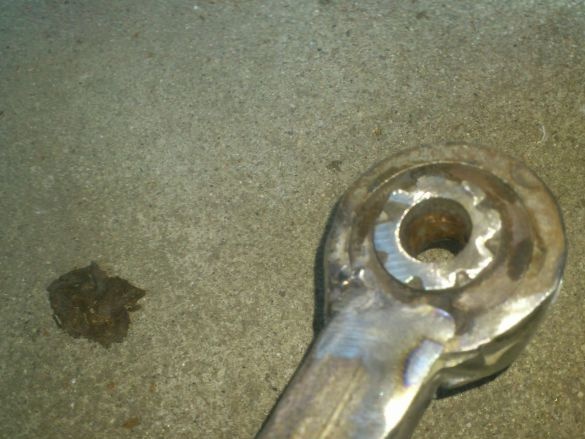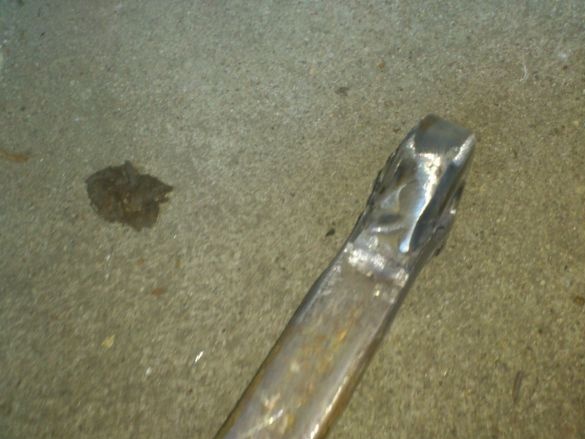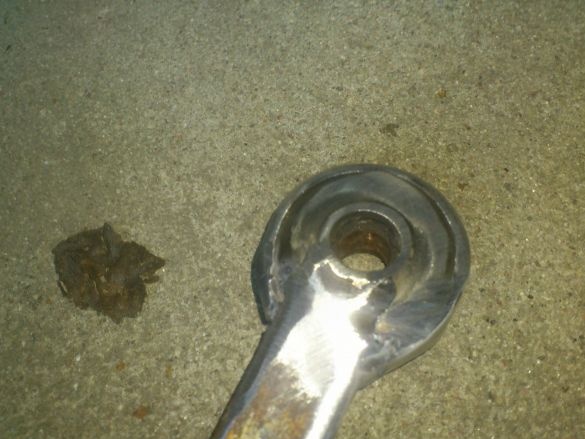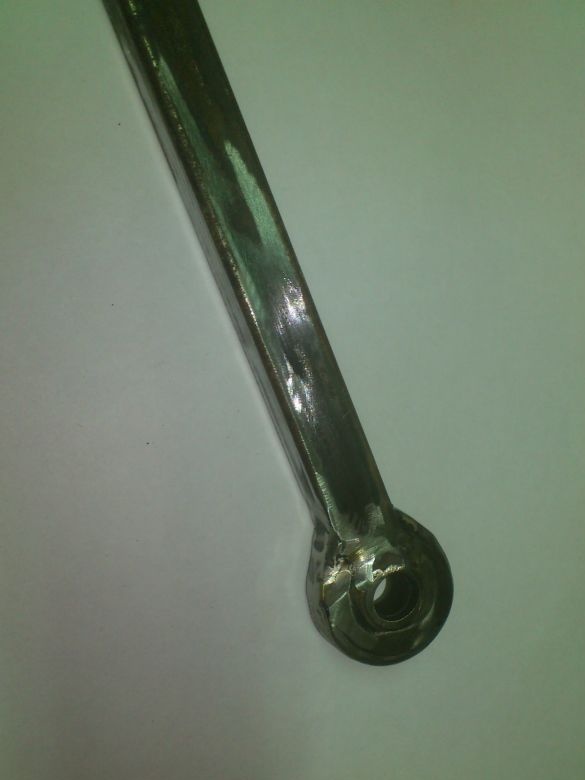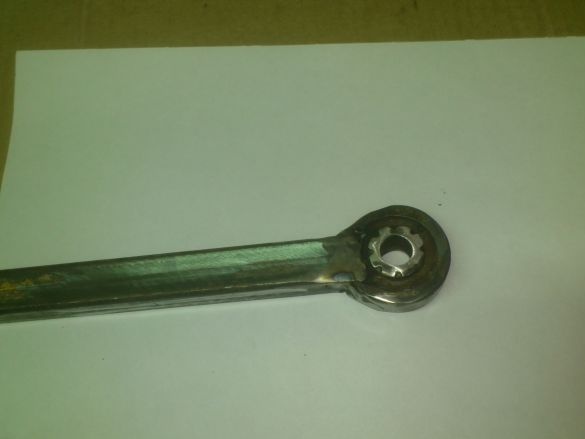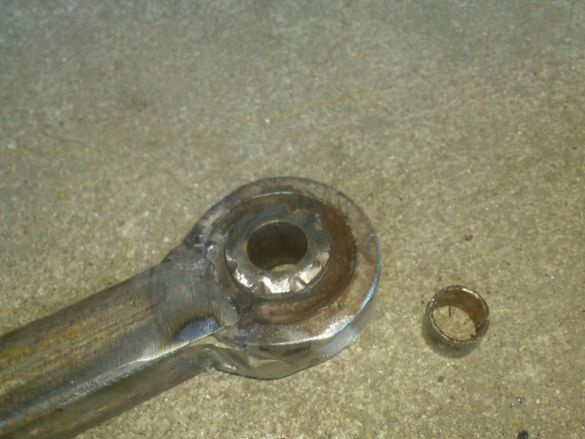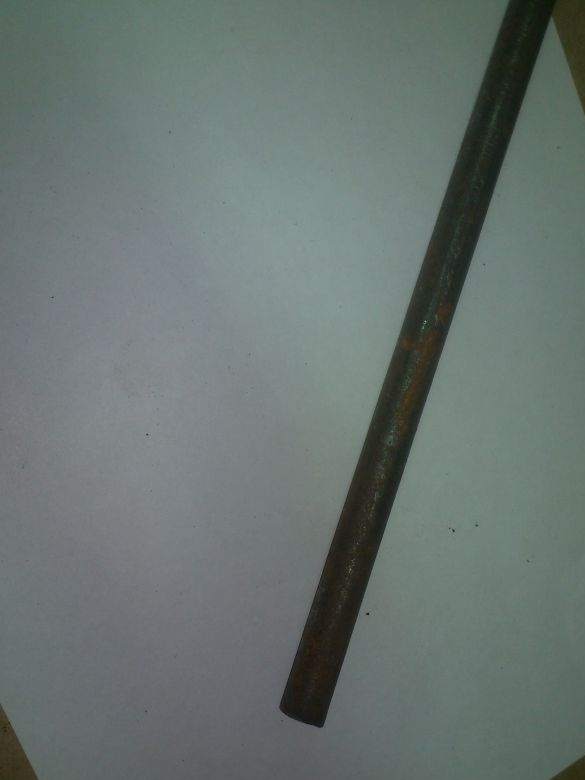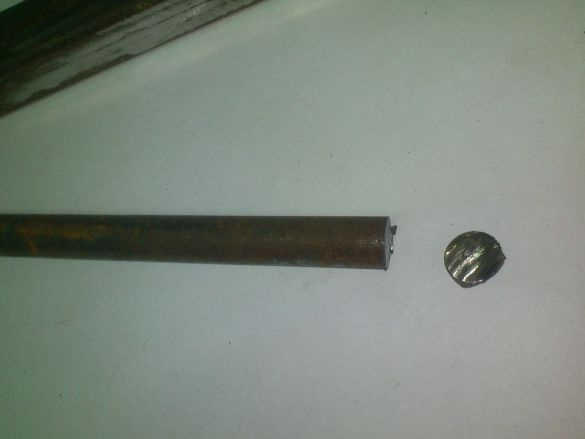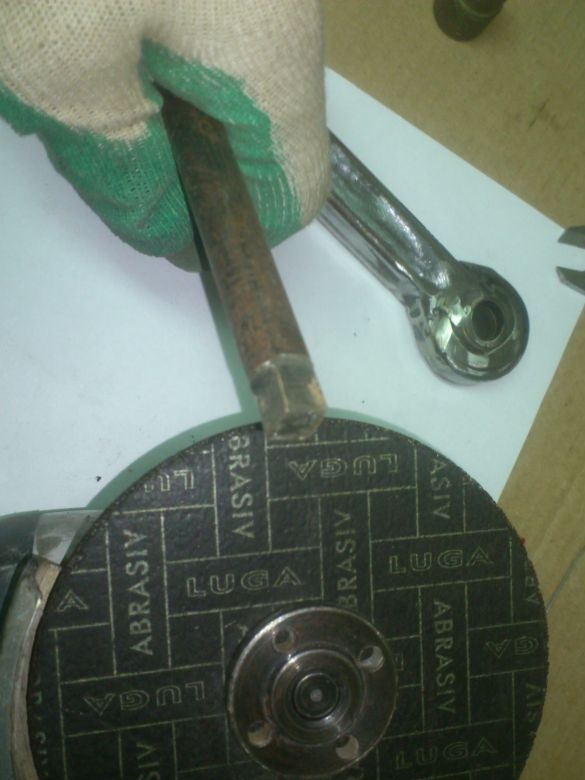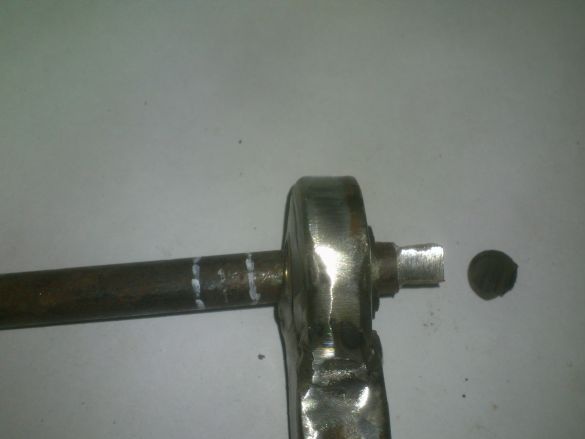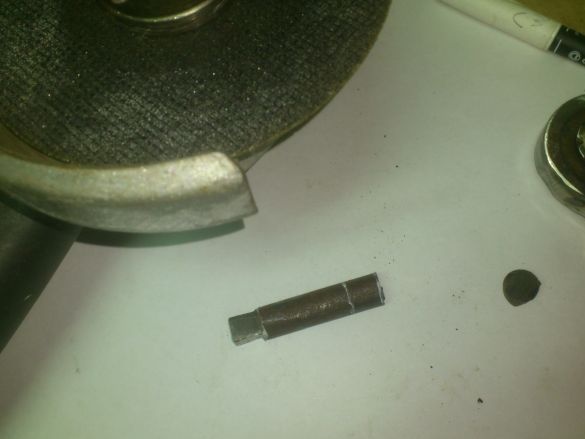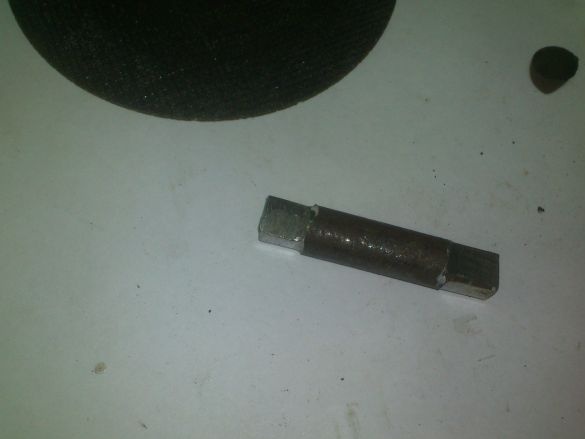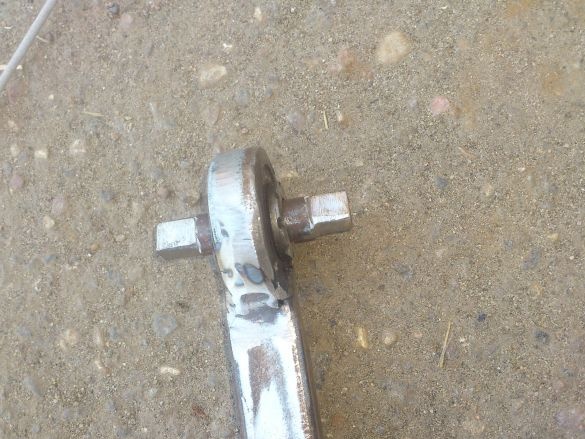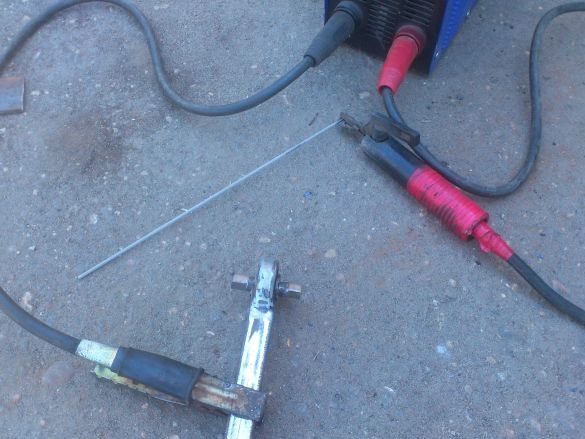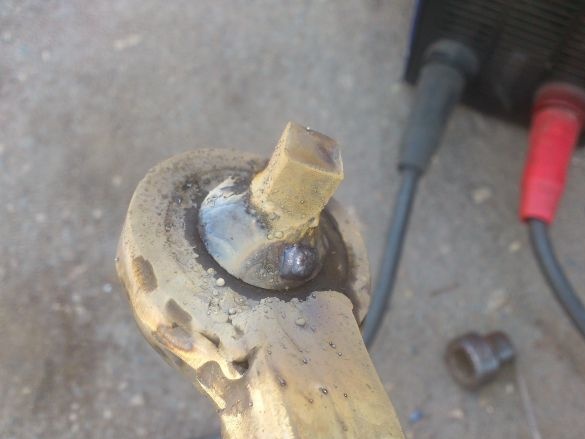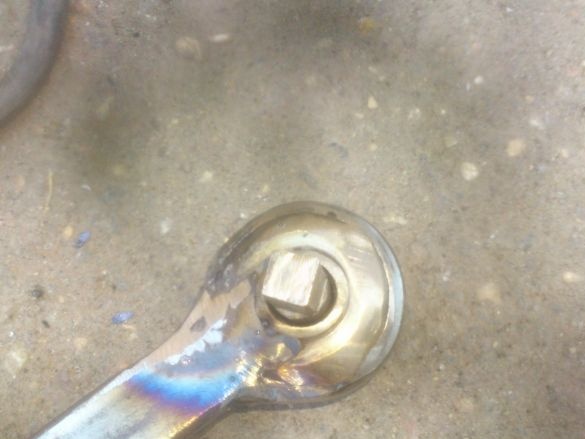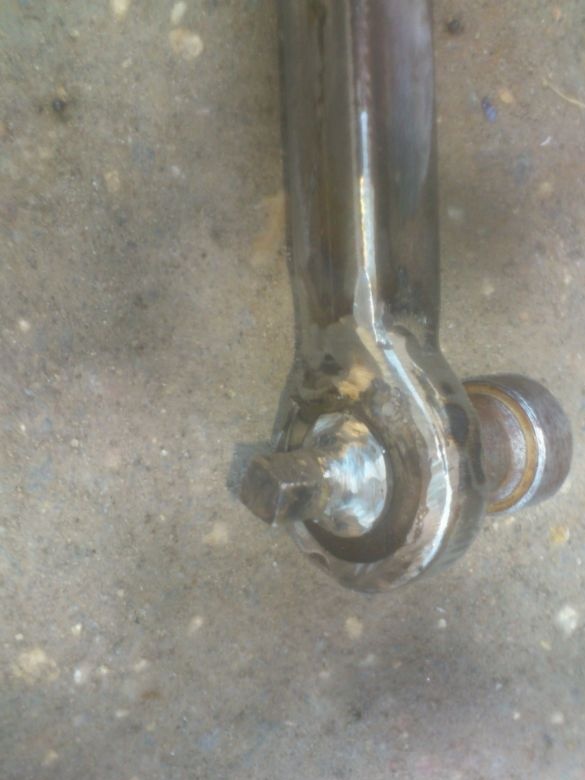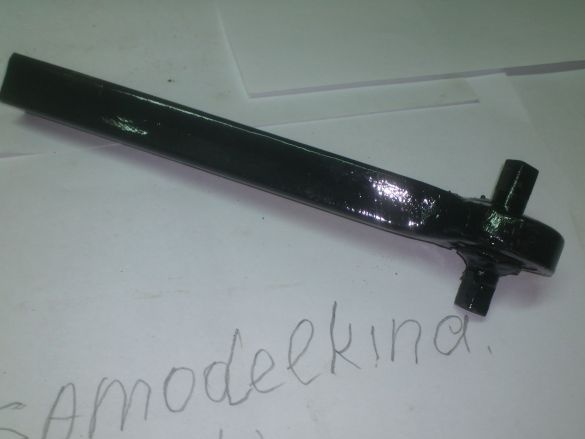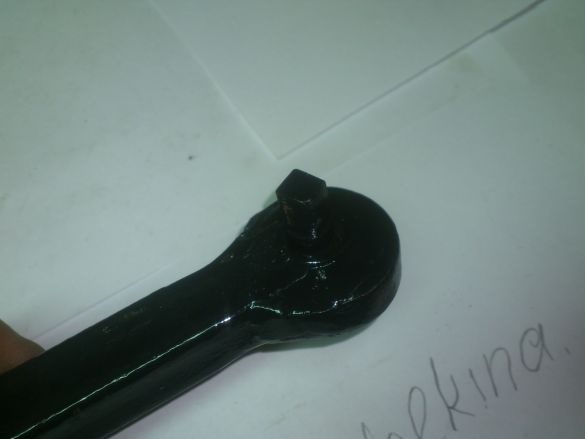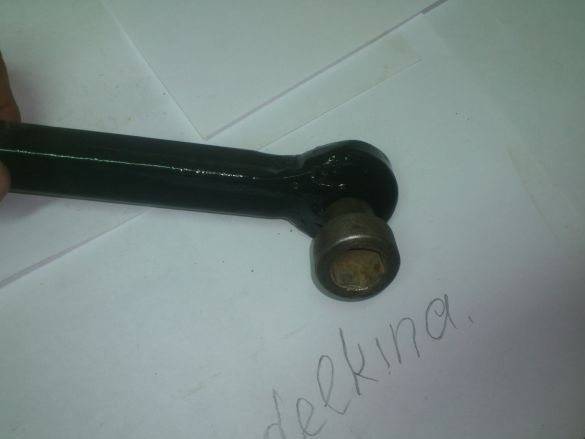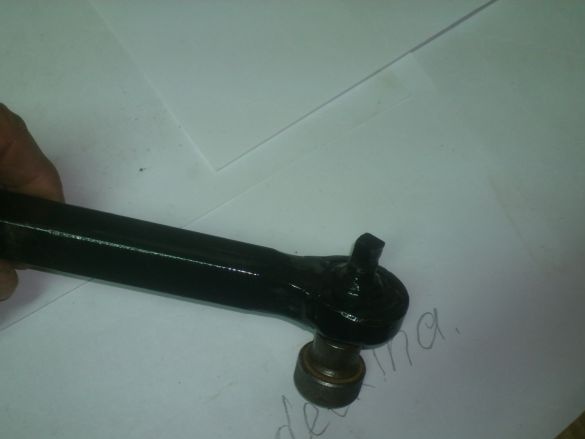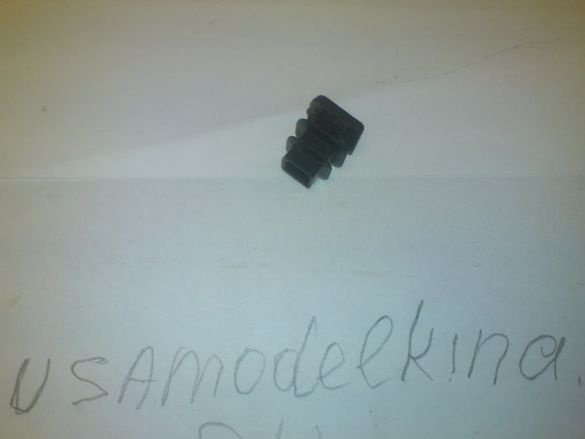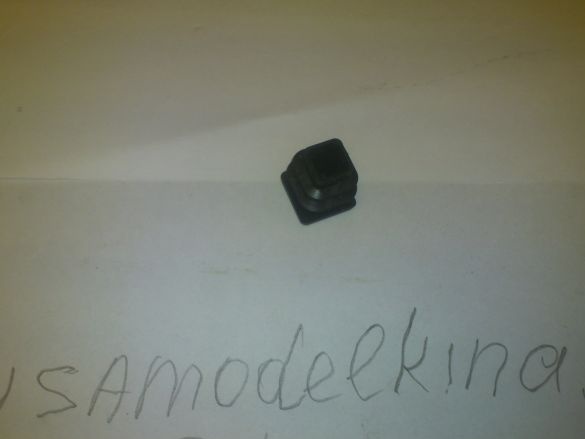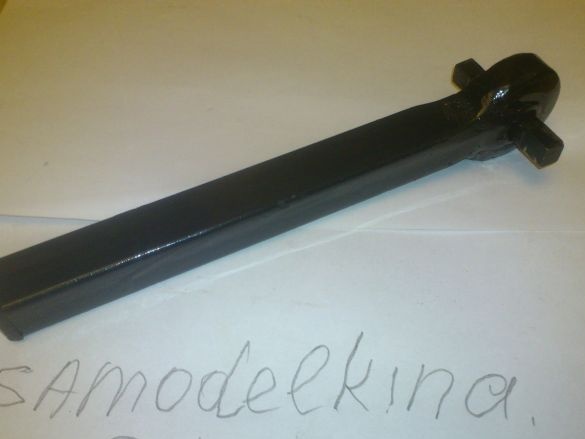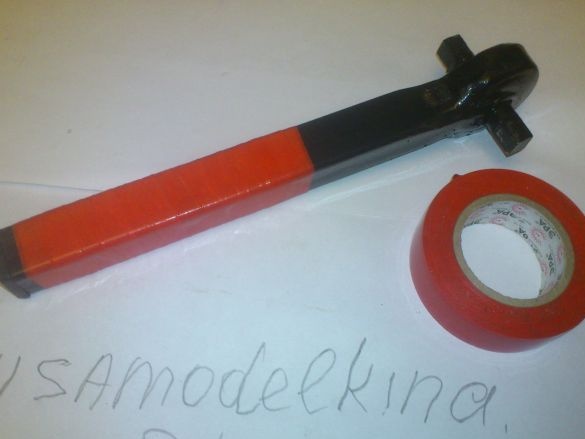This key is a “ratchet”, which I made of the so-called “Bendix” - an overrunning clutch for the drive of a car starter.
I took the word "rattle" in quotation marks for good reason ... There is nothing popping! Simply, I applied this name by analogy with the "popular name" of industrial-grade wrenches for socket wrenches with one-way operation. They, as everyone knows, actually have this property - to crack when the winch is retracted to the side opposite to the working stroke. (The clicks are emitted by a spring-loaded wedge slipping over the teeth of the ratchet gear).
In the key that turned out, nothing bursts with me, because it is arranged according to a completely different principle. Unlike ratchets made according to the ratchet principle, the “bendix” is a roller overrunning clutch in which several spring-loaded rollers, falling into the constriction, tightly wedge the inner cage into the outer cage when rotating the cage in one direction, and are pushed into a wider space (and thereby freeing the clip) when rotating in the other direction.
It was such an overrunning clutch device driven by a solenoid that was patented in 1910 by the inventor and industrialist Vincent Hugo Bendix. More than a hundred years have passed, but no more successful solution has been found for putting the starter into gearing with the flywheel crown, while preventing reverse transmission after starting the engine. The word "bendix" has already become the popular name of this site. And few motorists know that this is the name of the great engineer ...
The idea itself was taken by me from the Internet. (I do not pretend to be authors of the idea.))) There are many publications of such a plan on the net. But, as a rule, people are limited to the fact that they make and weld the collar itself, and as a handle, they simply weld a wrench:
As a result, they end up with a bulky and inconvenient design, which is hardly applicable in practice, since it is rarely necessary to wrap / unscrew the nuts "in a clean field", and crawling with this knob into an inaccessible place is quite problematic.
In addition, while watching videos with the manufacture of this "unbelievably cool homemade" I noticed that the authors often apparently do not know the overrunning clutch device, because it mercilessly overheats it with welding !!! But there are springs! After overheating, the resource of this device (already not very large) decreases many times, if not by an order of magnitude ...
Of course, I have in my possession "ratchets" of various sizes and modifications. But I decided to make this for another reason. I'm currently making one homemade device (it is not finished, so I will describe it later). And this device will need to be actuated by rotating the bolt. Accordingly, it would be necessary to equip it with the corresponding key so as not to “look for an instrument for an instrument” when it comes time to use it!)))). To staff my other homemade products I used cheap chinese ratchet with Ali Express. But not in this case! After all, here you will need to rotate the M10 bolt !! And this is the head of 17 millimeters! As a rule, a larger one is needed for these.
Having rummaged in my stocks, I found just such a powerful “head” for 17 more Soviet-made:
It is made under the collar with a face of 10 mm. I found such a "rattle." But it turned out to be of good quality, and I did not want to "spoil" it, putting it in a kit for an instrument, which I will probably use, not every year!))). Yes, and "the roof of the true master" leaped, and I decided to make a home-made "rattle" !!! Yes, I got carried away so much that I put aside even the instrument for which I made it !!
Here is what I needed for this:
1. Overrunning clutch ("Bendix").
2. Profile pipe with a cross section of 20 by 20 mm. (For the manufacture of the handle).
3. Steel bar with a diameter of 12 mm (for the manufacture of a winch).
4. Plastic plug for profile pipe.
Getting started. I got the "bendix" after replacing it with car Toyota Yaris, but because it turned out to be quite compact in size:
Its device was no different from the device of almost all “bendixes” - the inner ring is tightly connected to the gear, which engages with the crown, the outer one - with the body, which on the other hand has a protruding hub with inclined slots, through which the device makes translational movement at the entrance / exit into this gearing ...
First, with the help of angle grinder, I cut off the gear:
Then he cut off the hub. At the same time, I left on both sides a small protruding part:
Next, I proceeded to manufacture the handle. To do this, I took a segment of the profile tube with a side of 20 mm, and a wall of 1.5 mm. This was due to the fact that the thickness of the clip "Bendix" was 17 mm - just the inner size of the tube.
At the end of the tube, I made two cuts in opposite faces so as to subsequently straighten these faces, and make semicircular notches in the other two:
This is necessary in order to then tightly insert the "bendix" into the resulting handle and weld. In this case, you should pay attention to the fact that on the hub side the handle fits as tightly as possible, but on the gear side it does not reach it:
After that, it remains to weld the handle to the body and clean it ... This is best done, of course, with the help of a semiautomatic device, because the casing of the clip to which you want to weld is made of metal of small thickness. But I had only arc welding, so the weld points do not look very nice. After all, I had to cook in small drops, dropping after each into water. (Do not forget that the springs inside can "sit down" when overheating !!!)
I finally cleaned it with an emery-petal wheel:
Now let's start making the actual winch. I knocked out the sleeve from the inside
The inner diameter of the gear turned out to be about 12.5 mm. (At the hub - a millimeter more). Therefore, I decided to make the collar myself from a rod with a diameter of 12 mm, a piece of which I found in my "scrap metal":
To start, I aligned the end:
Then, working as a “grinder” with a cleaning circle, he gave the end of the bar a length of 10 millimeters square with a side equal to about 10 mm.
(Approximately - because I just used the landing hole of the socket key I needed as a template.Hands did not reach the caliper)))).
Then I inserted the bar into the key, aligned it and marked the dimensions on the other side with a marker, which I then cut and processed. After all, switching to reverse in my "ratchet" will not be provided!))) Therefore, you just need to make two seats headings from different sides. One we will turn away, the other - wrap ...:
Thinking over this homemade product, I decided to make ball fixation of the heads on the head. For this, I have already obtained suitable balls from bearings and a spring from a lighter.))). But, having made the handle, I noticed that, thanks to a fairly accurate fit and the refusal to fine-tune grinding and polishing, the socket wrench on the handle is held tight enough! It is difficult to reset it even if you shake the tool very strongly and sharply, holding the handle !!! Therefore, I decided not to bother and not make any fixes !!! Moreover, I will use my “ratchet” very rarely and only for one operation ..
So I just put the knob inside the Bendix
And welded to what was left of the gear.
In this case, again, periodically cooling, and making sure that there is no skew - on the other hand, it should freely rotate in the hole of the hub, without touching its walls:
And cleaned the welds:
After that I painted the product. Used a spray can with black enamel, which fell under the arm:
Well, my "rattle" is almost ready! The final "refinement" remained. At the end of the handle, I hammered a plastic plug for profile pipes of a suitable size. (I often use square cross-sections in homemade products, so there are many different plugs in stock. After all, they cost quite a penny, and they give the product a “finished look” very well:
And finally, I decided to make the instrument brighter. From me the tool is constantly "hiding" (and, especially, black))), so I try to add some bright color element to it. The easiest way is to wrap the handle with a yellow, or red insulating tape ...
This time again, red came to hand:
That's all!! The tool is ready to use ...
Finally, I want to say that you cannot use such a screwdriver to tighten and break nuts !! Of course, the usual "ratchets" are not designed for this !!! We all know that for this, in every set of socket wrenches, there is always an ordinary steel handle !!! It is for them that it is necessary to break the nut, and only after that, rearrange the head on the “ratchet”, so that it is more convenient to drive it out over the entire length of the thread .... The same thing is in the reverse sequence - we drive the nut all the way, remove the “ratchet” ", set the knob, and tighten ....
... Uh ... Only now show me a person who never violated these instructions ...))))
But, in the case of a freewheel, such numbers may not work ...)))). Indeed, when tightening the rollers, they are pressed into the narrow part simply with enormous effort !!! At the same time, they are made of high-carbon, but at the same time, of sufficiently ductile steel (otherwise they will slip and will not be able to fulfill their function). And therefore, it may be such that even after one very strong pulling on them, there will simply appear small flatnesses in the places of compression ...
And that’s it !!! They will no longer be able to roll over, and will always be located exactly in this one position, which will lead to very fast attrition !!! After all, without riding, they will wear out on the “working move”, and even on the “idle” !!! And to complete failure it is enough to erase only a small fraction of a millimeter!
Therefore, to consider such a "rattle" as a full-fledged working tool is still not worth it .... But for infrequent operations, it certainly will do.
Well, as is usual with us masters, do not forget about the pleasure of making the right thing from what you were going to throw away!


